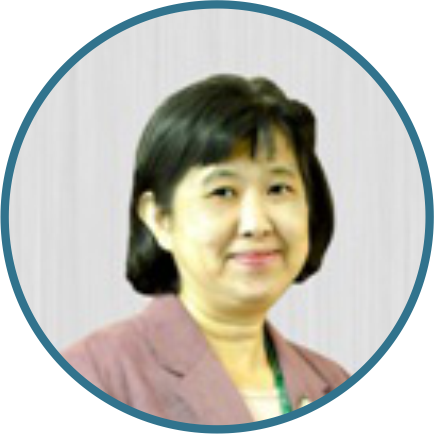Ethnomatematics of geometry shape in the Gedongsongo Temple
DOI:
https://doi.org/10.21831/ej.v3i2.52696Keywords:
Keywords, Geometry, Ethnomatematics, Gedongsongo temple.Abstract
The objective of the study is to explore and find out the ethnomathematics of Gedongsongo Temple, located in Central Java, Indoensia. The type of study is qualitative with an exploration way and ethnographic approach. The data obtained in the form of qualitative data, the source of research data obtained through observation, interviews, documentation, and study of literature related to Gedongsongo Temple. The data collection technique was done by questioning, observing, interviewing, and documenting. The results showed that the ethnomathematics of Gedongsongo Temple has the potential to be integrated into mathematics learning. Ethnomathematics that can be integrated includes the concept of flat area, volume of space, comparison/ratio, reflection, and symmetry. The flat-geometry concept is found in the several parts of Gedongsongo Temple including square, rectangle, triangle, and trapezoid. The spatial-geometry concept is also found in several parts of Gedongsongo Temple including cubes, blocks, tubes, and a triangle prism. Meanwhile, the comparison/ratio concept found is the Golden Ratio on the fore-temple of Perwara in the area of Candi Gedong III. The symmetry and reflection concept is found in Candi Gedong I. These concepts can be applied in mathematics learning as a contextual geometry problem as well as a way of introducing cultural elements to students.
References
Ahmadi, A. (2003). Ilmu sosial dasar. Jakarta: PT. Rineka Cipta.
Akkase, T.H. (2017). Filsafat kebudayaan dan sastra (dalam perspektif sejarah). Jurnal Ilmu Budaya, 5(1), 69-75.
Bishop, A.J., Hart, K., Lerman, S., & Nunes, T. (1993). Significant influences on children's learning of mathematics. Paris: UNESCO.
Creswell, J.W. (2013). Research design pendekatan kualitatif, kuantitatif dan mixed. [Research design qualitative, quantitative, and mixed methods approaches] (Ahmad Fawaid, Trans.). Yogyakarta: Pustaka Pelajar. (Original work published 2013).
Gilsdorf, T.E. (2012). Introduction to cultural mathematics: With case Studies in the otomies and incas. Hoboken, NJ: John Wiley & Sons, Inc. https://doi.org/10.1002/9781118194164
Hariyanto, H. (2011). Pengembangan objek wisata Candi Gedongsongo sebagai laboratorium IPS terpadu. Jurnal Geografi: Media Informasi Pengembangan dan Profesi Kegeografian, 8(2), 126-134. https://doi.org/10.15294/jg.v8i2.1663
Haza'a, S.K., Dyatriningrum, S., & Ngathoillah, I. (2004). Sejarah matematika klasik dan modern. Yogyakarta: UAD Press.
Kencanawaty, G., & Irawan, A. (2017). Penerapan etnomatematika dalam pembelajaran matematika di sekolah berbasis budaya. Ekuivalen-Pendidikan Matematika, 27(2), 169-175. https://doi.org/10.37729/ekuivalen.v27i2.3652
Marsigit. (2016, 16 April). Pengembangan pembelajaran matematika berbasis etnomatematika. Artikel dipresentasikan di Seminar Nasional Matematika dan Pendidikan Matematika "Etnomatematika; Matematika dalam Prespektif Sosial dan Budaya", STKIP PGRI Padang. http://semnas-matematika.stkip-pgri-sumbar.ac.id/wp-content/uploads/2020/01/Prosiding-SemNas-17-nov16.pdf
Massarwe, K., Verner, I., & Bshouty, D. (2010). An ethnomathematics exercise in analyzing and constructing ornaments in geometry class. Journal of Mathematics & Culture, 5(1), 1–20.
Nida, I.K., Buchori, A., & Murtianto, Y.H. (2017). Pengembangan comic math dengan pendekatan etnomatematika pada materi Kubus dan Balok di SMP. AKSIOMA: Jurnal Matematika dan Pendidikan Matematika, 8(1), 31-40. https://doi.org/10.26877/aks.v8i1.1531
Prihandoko, A.C. (2006). Memahami konsep matematika secara benar dan menyajikannya dengan menarik. Retrieved from https://antoniuscp.files.wordpress.com/ 2013/02/memahami-konsep-matematika1.pdf
Putra, R. Y., Wijayanto, Z., & Widodo, S. A. (2020). Etnomatematika: Masjid Soko Tunggal dalam pembelajaran geometri 2D. Jurnal Riset Pendidikan Dan Inovasi Pembelajaran Matematika (JRPIPM), 4(1), 10-22. https://doi.org/10.26740/jrpipm.v4n1.p10-22
Rahma, H. (2007). Aplikasi peta tematik untuk pariwisata (kasus aplikasi peta lokasi dan waktu tempuh bagi pelaku jasa wisata di kompleks Candi Gedongsongo kabupaten Semarang. Jurnal Geografi: Media Informasi Pengembangan dan Profesi Kegeografian, 4(2), 138-146. https://doi.org/10.15294/jg.v4i2.105
Rasiman, R., Prasetyowati, D., & Kartinah, K. (2020). Development of learning videos for junior high school math subject to enhance mathematical reasoning. International Journal of Education and Practice, 8(1), 18-25. https://doi.org/10.18488/journal.61.2020.81.18.25
Rosa, M., & Orey, D.C. (2007). Cultural assertions and challenges towards pedagogical action of an ethnomathematics program. For the Learning of Mathematics, 27(1), 10-16.
Soedjadi, R. (2007). Inti dasar-dasar pendidikan matematika realistik Indonesia. Jurnal Pendidikan Matematika, 1(2), 1-10. https://doi.org/10.22342/jpm.1.2.807.
Sugiyono. (2016). Metode penelitian kuantitatif, kualitatif dan R&D. Bandung: Alfabeta.
Suhartini, S., & Martyanti, A. (2017). Meningkatkan kemampuan berpikir kritis pada pembelajaran geometri berbasis etnomatematika. Jurnal Gantang, 2(2), 105-111. https://dx.doi.org/10.31629/jg.v2i2.198
Sumiyati, W., Netriwati, N., & Rakhmawati, R. (2018). Penggunaan media pembelajaran geometri berbasis etnomatematika. Desimal: Jurnal Matematika, 1(1), 15-21. https://doi.org/10.24042/djm.v1i1.1907
Downloads
Published
How to Cite
Issue
Section
License
The authors submitting a manuscript to this journal agree that, if accepted for publication, copyright publishing of the submission shall be assigned to Ethnomathematics Journal. However, even though the journal asks for a copyright transfer, the authors retain (or are granted back) significant scholarly rights.

Ethnomathematics Journal by https://journal.uny.ac.id/index.php/ethnomath is licensed under a Creative Commons Attribution-ShareAlike 4.0 International License.











